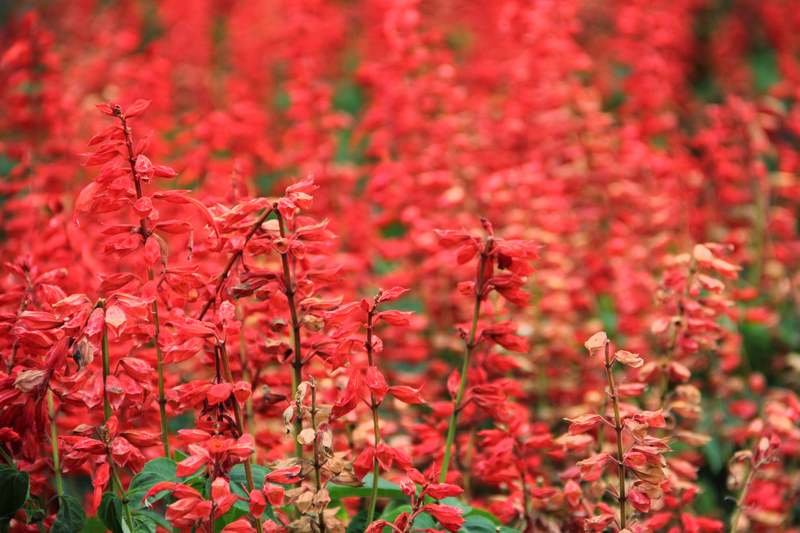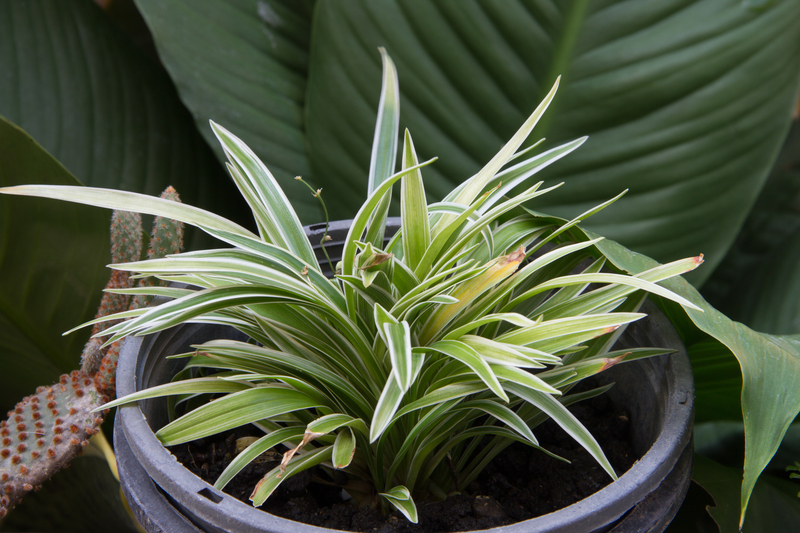Mastering Hedge Trimming: Discover Unique Shapes and Styles
Posted on 16/06/2025
Mastering Hedge Trimming: Discover Unique Shapes and Styles
If you've ever walked past a beautifully-shorn hedge and wondered how those intricate shapes and perfect lines were created, you're not alone. Hedge trimming has evolved far beyond basic maintenance and has become a true art form. Today, landscape enthusiasts and gardeners alike take pride in transforming outdoor spaces by experimenting with unique hedge shapes and styles. Whether you're a beginner or a seasoned gardener, mastering hedge trimming opens up a world of creative possibilities for your garden.
Why Hedge Trimming Matters
Hedge trimming is more than an aesthetic endeavor: it plays a crucial role in the health and longevity of your shrubs. Proper trimming encourages new growth, keeps plants vigorous, and fends off pests and diseases. But there's an art to it--by learning the techniques and understanding the different hedge shapes, you'll take your garden from ordinary to extraordinary.

Essential Tools for Creative Hedge Trimming
Before you dive into shaping and styling, make sure you have the right tools for the job:
- Manual hedge shears: Ideal for precision trimming and shaping intricate designs.
- Electric or battery-powered trimmers: Perfect for handling larger hedges and saving time on routine trims.
- Topiary shears: For fine detail work on unique shapes and sculptures.
- String, stakes, and templates: Ensure symmetry and consistency in complex designs.
- Protective gear: Gloves and safety glasses for a safe trimming experience.
Understanding Hedge Types
Not all shrubs are suited for every hedge shape or style. Here's a quick overview of common hedge plant types and their suitability for creative trimming:
- Boxwood (Buxus): Renowned for their dense growth, boxwoods are the top choice for topiary art and geometric shapes.
- Yew (Taxus): Hardy and slow-growing, yew hedges are perfect for intricate forms and low-maintenance sculptures.
- Privet (Ligustrum): Fast-growing and versatile, ideal for organic curves and traditional hedge shapes.
- Holly (Ilex): With its glossy leaves, holly stands out in both formal and informal styles.
- Laurel (Prunus laurocerasus): Large, lush leaves are best for bold, naturalistic styles rather than detailed topiary.
Unique Hedge Shapes and Styles
The art of creative hedge trimming invites you to explore a spectrum of unique shapes and styles. Here are some popular--and some unconventional--options to inspire your next project:
Classic Styles
- Formal Geometric Hedges: Rectangles, squares, and flat-topped hedges evoke a sense of order and structure. Use string lines and stakes for perfect symmetry.
- Rounded Hedges: Domes and balls soften the look of your garden while adding a sense of fullness and harmony.
- Tapered Hedges: These are trimmed slightly narrower at the top than the base, letting light reach all parts of the plant and keeping them healthy.
Modern and Artistic Hedge Shapes
- Topiary Art: Create living sculptures like spirals, pyramids, animals, or even abstract shapes. Thi technique is especially popular in formal gardens and can be as simple or as complex as you wish.
- Wave Borders: Undulating, wavy-topped hedges offer movement and dynamism, breaking the monotony of straight lines.
- Cloud Pruning: Also known as 'Niwaki' in Japanese gardening, this involves shaping hedges and shrubs into cloud-like forms, lending a whimsical, fluid feel to the landscape.
- Tiered Hedges: Trimming a single hedge in levels or steps adds a striking, architectural look, perfect for contemporary gardens.
Themed and Novelty Hedge Sculptures
- Animal Forms: From elephants to birds, animal-shaped hedges capture imaginations and serve as garden focal points.
- Giant Letters or Numbers: Ideal for events or as a playful addition to public spaces or private gardens.
- Garden Mazes: Create winding paths and secret hideaways with tall, well-maintained hedges.
- Seasonal Decorations: Trim hedges into holiday-themed shapes--think Christmas trees or Easter eggs--for special occasions.
Top Tips for Mastering Hedge Trimming Techniques
To achieve beautiful and unique hedge styles, it's essential to have a methodical approach. Here's what the pros recommend:
- Plan Your Design: Sketch your desired hedge shape before starting. Use reference images and measure your hedge to create accurate templates.
- Trim at the Right Time: The best time for hedge cutting is usually late winter or early spring before new growth starts. Avoid trimming in extreme heat or frost.
- Start Simple: For beginners, stick to basic shapes like rectangles or balls. As your confidence grows, try more elaborate designs.
- Step Back Often: Frequently view your work from a distance to maintain perspective and spot uneven areas.
- Use Guides: For straight lines, use string lines. For shapes, cardboard templates help maintain consistency.
- Make Clean Cuts: Always use sharp, clean tools for precise results and the health of your plants.
- Maintain Regularly: Regular touch-ups keep edges sharp and prevent overgrowth from ruining your design.
Hedge Trimming Styles for Different Garden Designs
Choosing the right hedge style can dramatically transform your landscaping. Here's how different styles complement various garden schemes:
- Formal Gardens: Geometric shapes and structured forms bring symmetry and a sense of order, best suited for traditional or classical landscapes.
- Contemporary Gardens: Sculptural and abstract forms, tiered and wave-edged hedges, offer a modern edge and create focal points.
- Cottage Gardens: Rounded or loosely trimmed hedges blend seamlessly with an informal, naturalistic planting style.
- Japanese Gardens: Cloud pruning and naturalistic styles mimic the freeform beauty of nature and promote tranquility.
- Family Gardens: Fun designs like animal shapes and letters keep the garden interesting for children and guests alike.
Step-by-Step Guide to Trimming Your Hedge in Creative Styles
- Preparation: Gather all necessary tools. Decide on the final hedge shape or style.
- Marking Out: Use string or cardboard templates to mark where you'll cut.
- Primary Cut: Start with the largest, rough shaping. Always cut less than you think, as you can trim more if needed.
- Refining the Shape: Gradually remove smaller sections to reveal the final silhouette. Step back frequently to check your progress.
- Detailing: Use finer shears or scissors for intricate parts, ensuring smooth lines or crisp angles.
- Clean Up: Collect trimmings and check for missed spots. Water and mulch the base to support recovery.
Common Mistakes in Hedge Trimming (and How to Avoid Them)
- Over-cutting: Removing too much foliage can stress the plant. Always err on the side of caution.
- Neglecting Regular Maintenance: Infrequent trims lead to overgrown, misshapen hedges, making future shaping much harder.
- Improper Tools: Dull or dirty blades tear rather than cut, causing brown tips and increasing disease risk.
- Ignoring Plant Health: Never trim drought-stressed or diseased plants. Wait until they have recovered for best results.
- Forgetting Taper: Flat sides may shade out lower branches and cause die-back. Slightly angle sides outward to keep growth uniform.
Advanced Tips for Creative Topiary and Hedge Sculptures
Ready to level up your hedge design skills? Here's how to approach more ambitious projects:
- Choose the Right Species: For detailed topiary, pick slow-growing, densely-leaved shrubs like boxwood or yew.
- Invest Time in Training: Use wire frames or chicken wire to help guide new shapes, especially for animal forms or letters. Plants will adapt to the frame's silhouette over several seasons.
- Patience is Key: Large sculptures can take years to reach their final form. Regular trims and shaping are essential for clean, healthy growth.
- Try Multi-Species Hedges: For a living tapestry, plant several species together and trim them into a unified shape showcasing different leaf colors and textures.
- Blend with Structure: Accentuate sculptures by pairing them with stone, wood, or metal garden features for contrast.
Eco-Friendly & Wildlife-Friendly Hedge Shaping
Mastering hedge cutting doesn't have to come at the expense of local wildlife. Consider these tips for a more sustainable garden:
- Timing: Avoid trimming during bird nesting seasons (early spring to late summer) to protect wildlife.
- Native Plants: Choose native species to provide habitat and food for bees, butterflies, and birds.
- Diverse Shapes: Allow some hedges to grow more informally or leave gaps for smaller mammals and insects.
- Organic Practices: Skip chemical pesticides and use mulch to promote healthy soil and biodiversity.
Seasonal Care for Uniquely Trimmed Hedges
Keeping uniquely shaped hedges at their best requires maintenance throughout the year:
- Spring: Perform formative trims and check for winter damage.
- Summer: Maintain sharp edges and shapes with light trims as needed.
- Autumn: Final shaping before winter, remove weak or diseased branches to reduce snow damage risks.
- Winter: Avoid trimming. Mulch bases and monitor for frost damage.

Frequently Asked Questions about Mastering Hedge Trimming
-
How often should I trim my hedges?
Most formal hedges benefit from two to three trims a year. Topiaries or intricate shapes may require monthly touch-ups in the growing season. -
Can I train any shrub into a unique shape?
Not all shrubs are suitable. Choose dense, leafy species that respond well to frequent pruning, such as boxwood, yew, or privet. -
What's the best way to fix a trimming mistake?
Be patient-- avoid drastic action, and let the hedge recover before reshaping. In the meantime, trim evenly around the mistake to encourage even regrowth. -
Is power trimming better than manual shears?
Power trimmers are great for speed and straight lines. Manual shears offer more precision for curves and artistic shapes.
Conclusion: Elevate Your Garden with Artistic Hedge Trimming
Mastering hedge trimming isn't just maintenance--it's an opportunity to harness your creativity, enhance your landscape, and express your personal style. With the proper tools, techniques, and a willingness to experiment, anyone can transform an ordinary hedge into a standout garden feature. Whether you're drawn to classic symmetry, contemporary waves, or whimsical sculptures, the possibilities for unique hedge shapes and styles are truly endless.
So, grab your shears, map out your vision, and start shaping your own living masterpiece! Remember: consistency, care, and a dash of imagination are the keys to mastering the art of hedge trimming.



